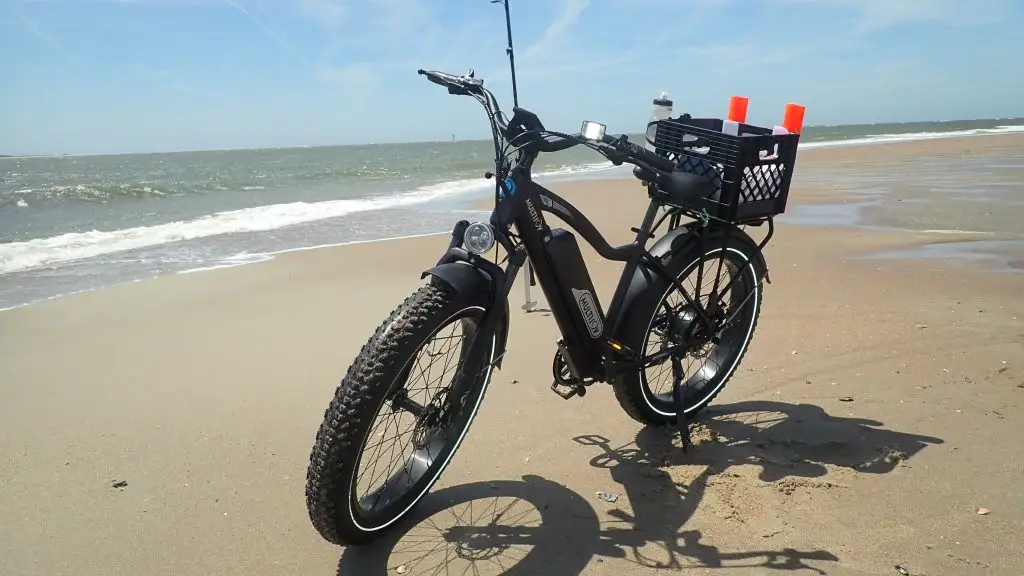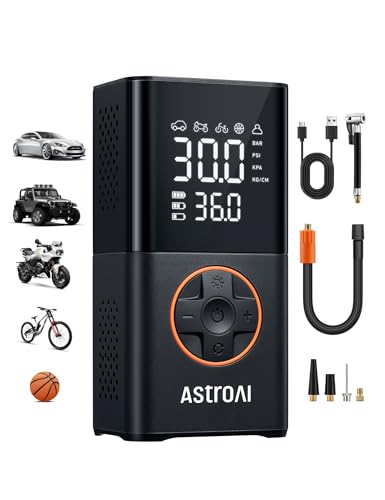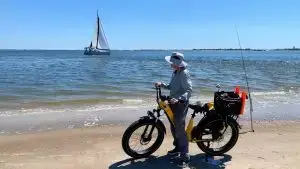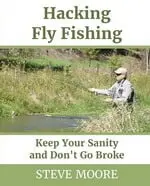We have all been there! You load your beach cart with 30 pounds of surf fishing gear – rods, cooler, weights, lures, and other necessities. After carefully navigating through the packed humanity near the access point, you put 100 yards between yourself and the nearest lounger. Finally, you eagerly set up your rod spike at that great spot where the current flows out between sandbars, attach your bait, and make the first cast deep into the gap. Ten minutes later, when you look back towards the crowd, you see a family of five moving in your direction. They would like some separation from the public as well. And where do they set up? Of course, not 75 yards from you, not 50 yards, but 20 yards from your position where the kids happily wade into the surf ignoring the risk of tangling with your lines and scaring the fish.
Frustration! There must be a better way!
The answer is to use a bike to put a significant distance between you and the teeming masses. What kind?
Well, you have a mountain bike with 2-inch tires. Will that do the trick? Sometimes. Typically, beaches have four distinct areas. At low tide, hardpack sand transitions to soft, wet sand, giving way to mushy sand before becoming dry, loose sand above the high tide mark.
Your mountain bike will negotiate the hardpack fine. However, as the tide comes in, it pushes you up the beach into the soft sand, where the 2-inch tires will sink, spin, and force you to walk the bike back to the parking lot. The hardpack only lasts an hour or so on either side of low tide, severely cutting fishing time! Another ever-present obstacle is a strong headwind – they never seem to be at your back – turning a pleasant fishing trip into a sweaty marathon as you pedal slowly back to the beach exit.
A fat tire beach cruiser would seem to be the answer. Like your mountain bike, a fat tire runs fine on hardpack, but the effort to ride a typically heavy fat tire bike through mushy sand is equally problematic – even if the bike has 21 speeds. It’s a grind!
Power. You need power! Power overcomes these issues. You need a fat tire ebike.
Here are some factors to consider when buying an electric fat tire beach cruiser for surf fishing:
Range: The whole purpose of buying the e-bike is to escape crowds. A highly capable battery based on name-brand components maximizes range and allows you to explore new fishing spots. The battery is the last thing you want to fail when you are miles away from the parking lot because the manufacturer cut a few corners. Look for the highest amp-hour rating that fits within your budget.
Motor: Match the battery to a highly capable motor tuned to take advantage of every watt of energy. Higher torque-rated engines are better. They provide the capability to grind through mushy sand, expanding your fishing window by hours. Instead of being limited to the hardpack, you can travel comfortably at the edge of the dry, loose sand.
Tires: Sharp shells scattered around the beach may damage tires. Look for tires with anti-puncture technology to protect against failure.
Gearing: The standard Shimano seven-speed transmission on e-bikes allows you to customize your desired workout level and extend the battery’s range to the limit. Do not get a bike with fewer speeds.
Brakes: Even on the wide-open beach, braking is essential. You will want to slow down for rough spots and gently move across ditches created by runoff. Besides, you don’t want to limit your use of the electric bike to just the beach. It’s perfect for riding on roads as well. A full-size fat tire ebike should have a 180mm mechanical braking system to provide plenty of stopping power regardless of the terrain. Bikes with smaller 20-inch tires can use 160mm rotors.
Comfort: As you ride longer to get farther from the crowd, comfort becomes important. Your fat tire beach cruiser must have a wide, shock-absorbing seat since you will ride in a more upright position. In addition, do not buy any beach cruiser, powered or not, without fenders or expect to be drenched with sand and spray.
Rear Shelf: A solid rear rack is another must-have for a beach fishing bike. Hang saddlebags/panniers across it and put a milk crate rigged out to hold your rods on top. You need plenty of equipment to adjust your tactics to whatever the fish are doing!
Configuration: The physical bike configuration is something people rarely think about when purchasing an ebike for surf fishing. Step-through models instead those with a top tube are best for several reasons. First, sand is unstable, and you may slip as you launch your leg over the top tube. The equipment on your rear rack makes mounting more difficult since it prevents you from swinging your leg over the back tire. The only option is lifting the leg straight up and crossing the top tube. A step-through model avoids these problems – no physical contortions are required. If you prefer a top tube model, our top tube design avoids most problems by slanting the tube down at the seat. This lowers the height of the tube and makes it easier to step over.
Throttle: Why do you need a throttle when you have pedal assist? Sometimes you need a little touch of power to overcome an obstacle and do not want to break stride. If you must increase your cadence or stand up to push down against resistance, it is easy to lose balance when riding on sand. A better approach is to pop the throttle, get the additional power you need, and maintain your balance.
So, what are you waiting for? Own the beach! No need to fight the crowds, get frustrated, and waste your valuable fishing time. Hop on an ebike and race away from the obnoxious crowds to find those top fishing spots that have not seen fishing pressure in weeks!






